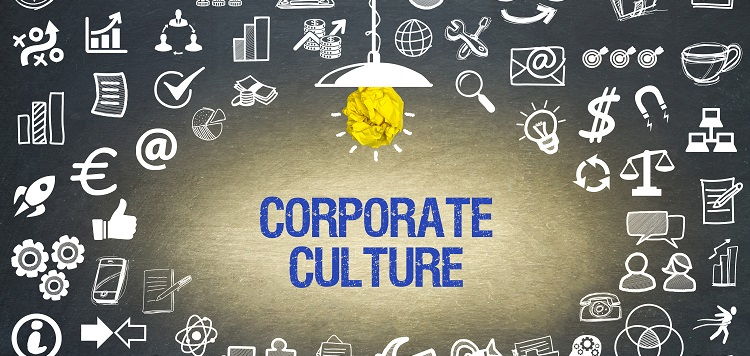A company’s culture is one of the critical factors that dictate its success. It influences everything from employee satisfaction to productivity, and ultimately, bottom-line results. However, many organizations struggle to create and maintain a positive culture, often blaming external influences. In this article, we will explore why it’s time to stop blaming external influences and accept that your culture is your responsibility.
Accepting Responsibility for Company Culture: External Influences vs. Responsibility
It is easy to blame external factors such as the economy, industry changes, or competition when it comes to a company’s performance. However, organizations have control over their culture, and it is crucial to accept this responsibility. The way a company treats its employees, values and rewards them, and provides opportunities for growth can significantly affect their performance, engagement, and ultimately, the company’s success.
Impact of Company Culture on Employee Experience
The employee experience is a critical component of a company’s culture. It refers to the sum of all interactions an employee has with their employer and colleagues, from recruitment to exit. A positive culture can enhance the employee experience, leading to increased job satisfaction, retention, and productivity. In contrast, a negative culture can lead to employee burnout, high turnover rates, and a decline in productivity.
Enhancing Culture Despite External Pressures
Enhancing a company’s culture does not need to be expensive. Small changes can make a big impact. For example, providing free snacks, organizing team-building activities, promoting work-life balance, and recognizing employees’ achievements can all help to create a positive culture.
Importance of Starting Small
Starting small with cultural improvements is a great way to achieve quick wins and gain momentum. These small improvements can then lead to more significant changes, resulting in a culture that reflects the organization’s values and goals.
Questions for Assessing Employee Experience
Assessing employees’ experience is critical in identifying areas that need improvement. Collecting employee feedback and analyzing it can enable organizations to make data-driven decisions about improving their culture.
Questions for Understanding Employee Needs
Some essential questions that help in assessing employee experience include: How do employees feel about their jobs? What motivates them? Are they happy with their work-life balance? Do they feel valued and supported? Do they trust their colleagues and management? These questions can help organizations identify gaps in the employee experience that need to be addressed.
Creating a Framework of Motivating Values: Benefits of Motivating Values
Creating a framework of motivating values that resonate with every employee is a free way to completely transform a work culture. Having common values that all employees believe in leads to greater collaboration, significant cohesion, and increased motivation.
To create a motivating values framework, organizations should involve both employees and leadership in identifying values that align with the company’s goals and objectives. They should then create an action plan on how to integrate these values into employee behavior and promote them through incentives and recognition programs.
Total Rewards as Culture Builders
Total rewards refer to all the elements that make up an employee’s compensation package, including salary, benefits, and bonuses. While they are vital, in these turbulent times, it’s essential not to neglect recognition, rewards, and development. These total rewards touchpoints reaffirm to employees how much the company cares about them.
Building Touchpoints for Affirmation
Creating touchpoints such as employee awards, recognition programs, and professional development opportunities can enhance the total rewards package and, in turn, build a positive culture.
Results-Oriented Mindset vs. Productivity: Hidden Costs of a Results-Oriented Mindset
Many organizations embrace a results-oriented mindset, where productivity and efficiency take priority over everything else. While this mindset may seem helpful, it can have hidden costs, including employee burnout, stress, and disengagement.
Prioritizing Productivity and Culture
Organizations need to prioritize both productivity and culture, creating an environment in which employees thrive, are motivated, and feel cared for. By prioritizing culture, organizations can create a sustainable and more productive work environment.
Trusting Employees for Work-Life Balance: Benefits of Trusting Employees
When you allow employees to maintain a healthy work-life balance, you have to trust that they will still be productive and engaged in their work. Offering flexibility and autonomy can provide numerous benefits, including improved job satisfaction, reduced absenteeism, and improved employee retention.
Avoiding Negative Effects of Micromanagement
Micromanagement can have adverse effects on employees and the overall culture of an organization. By trusting employees and offering them more freedom, companies can help them succeed while also promoting a healthy and positive work culture.
Proactively Creating a Positive Workplace
Acknowledging the Impact of External Factors
It is essential to acknowledge the impact of external factors on a company’s culture. These factors can include changes in the industry, economic downturns, and global pandemics. Proactively creating a positive workplace can help employees navigate external challenges and build resilience.
Cultivating a Haven for Employees
Creating an environment in which employees feel safe, supported, and valued can help cultivate a haven for employees. It promotes a positive workplace culture where employees can thrive, enabling organizations to achieve their goals and objectives.
In conclusion, prioritizing culture in the workplace is crucial for creating a healthy and sustainable work environment. A company’s culture is its responsibility, regardless of external factors. By focusing on employee experience, creating motivating values frameworks and total rewards packages, and fostering a positive workplace, organizations can create a culture that aligns with their values and supports their objectives.

